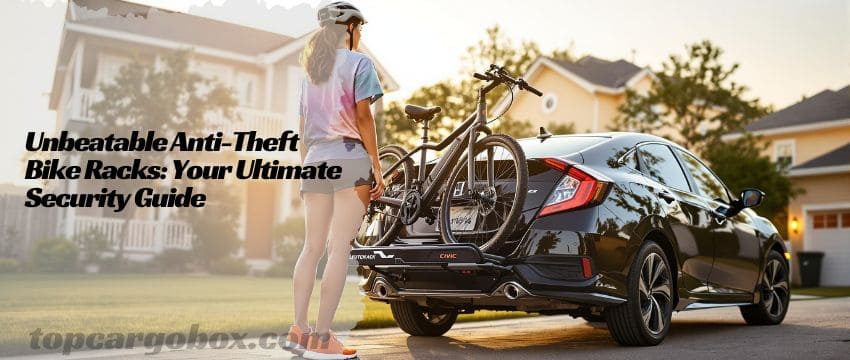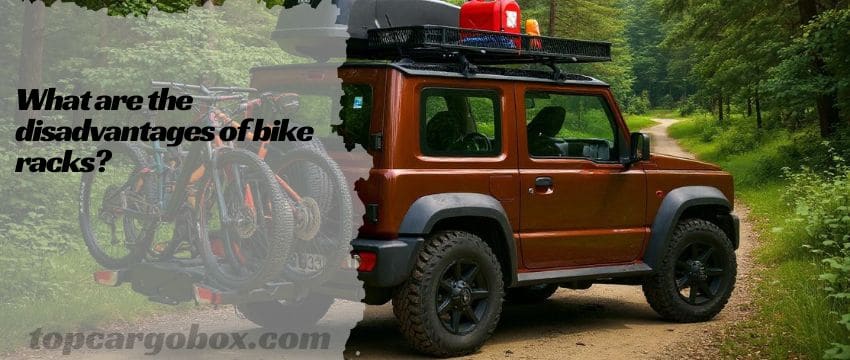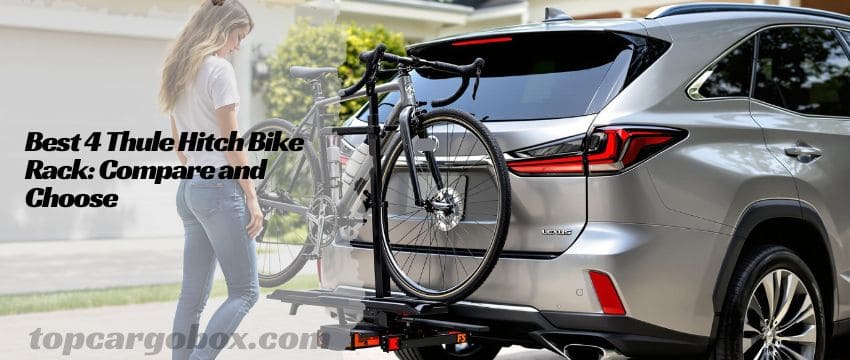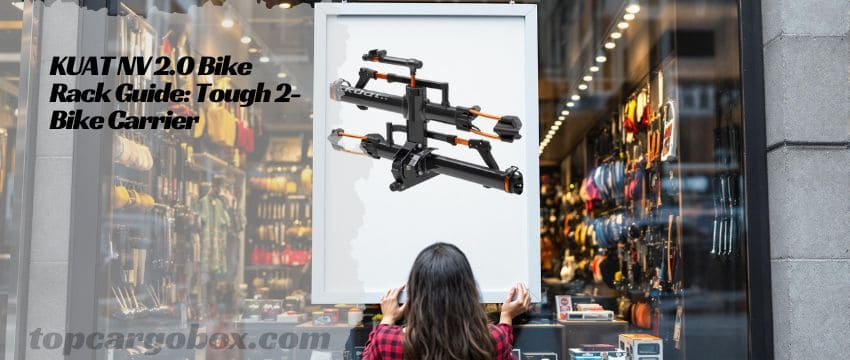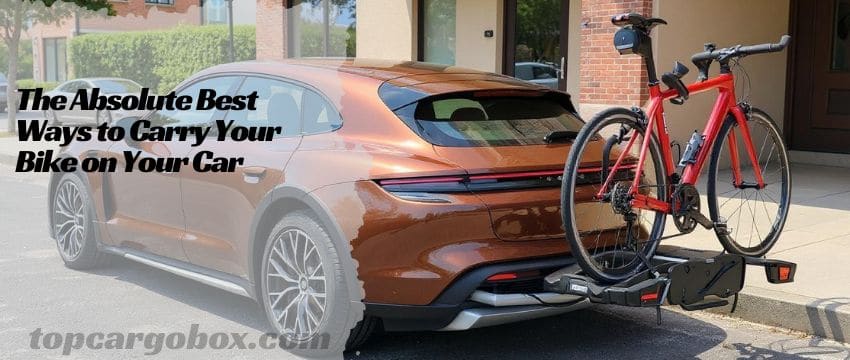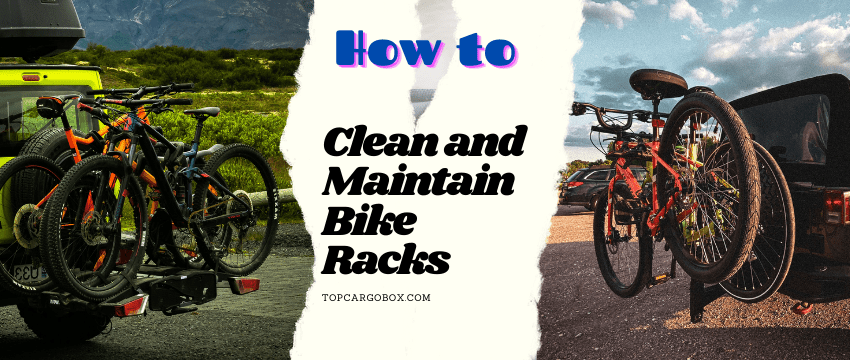Hey there, fellow rider! How’s it going? Ever had that sinking feeling in your gut when you walk back to your car after a killer trail ride or a coffee stop, only to see an empty space where your precious bike should be? Yeah, me too. It totally sucks, doesn’t it? Bike theft is a massive headache, and honestly, it can ruin your whole vibe faster than a flat tire on a rainy day. But what if you could slash that risk dramatically? Let’s dive deep into the world of seriously secure car bike racks and the anti-theft tech that actually works. No fluff, just the real deal on keeping your wheels safe.
Why Standard Rack Security Often Falls Short (And Why You Should Care)
Let’s be real for a sec. Most basic bike racks? They’re about as secure as a screen door on a submarine. Think about those simple cable locks bundled with trunk racks or the basic pin locks on entry-level hitch racks. A determined thief with a pair of bolt cutters or even just a sturdy screwdriver can make off with your bike in under 30 seconds. For real? Yep. It happens constantly. The problem is, many racks prioritize ease of use and low cost over real security. They might deter an opportunistic grab-and-go, but they won’t stand up to someone who came prepared. You wouldn’t lock your bike to a street sign with dental floss, right? So why trust your $500, $1000, or even $5000+ investment to a flimsy rack lock? It’s a gamble you just don’t need to take. Understanding the different types of bike racks is the first step to knowing where the vulnerabilities lie.

The Anti-Theft Arsenal: What Actually Works on Modern Racks
Alright, so what separates the legit security champs from the wannabes? It’s not just one magic feature; it’s a layered approach. Think of it like building a fortress for your bike:
- High-Strength Locking Cores: Forget those cheap, easily picked wafer locks. Top-tier racks use disc detainer cylinders or double-bitted keys. These are the same tough nuts you find on high-security bike locks like Kryptonite’s New York Fahgettaboudit series. They resist picking, drilling, and hammering way better. Some even offer unique key codes, meaning only your key fits your lock.
- Bombproof Locking Arms & Frames: What good is a fancy lock cylinder if the arm it secures is made of pot metal? The best racks use hardened steel for the locking mechanisms and critical frame components. We’re talking steel that laughs at hacksaws and requires serious power tools (and serious time) to get through. Look for terms like “through-hardened” or “boron steel.”
- Integrated Locking Points: This is huge. The most secure racks lock the bike to the rack and lock the rack to your car. Hitch racks should have a robust lock securing the rack’s stinger into the hitch receiver itself (so the whole rack can’t just be lifted out). Trunk racks need solid points to lock the frame hooks to your car’s structure. Roof racks? The feet need to be locked to the crossbars, and the crossbars locked to the roof rails or tracks. It’s all about eliminating the weakest link. Getting the installation right is crucial for these locks to function effectively.
- Anti-Rattle & Anti-Rotation Tech: Ever notice how some racks wobble like crazy? Besides being annoying, that movement can actually wear down locking mechanisms or create gaps a thief could exploit. Premium racks feature clever designs – like internal hitch locks, tapered hitch pins, or advanced tightening systems – that cinch the rack down tight, eliminating play. This makes it harder to jimmy locks and reduces stress on components. Preventing that annoying bike rack swaying is part of the security equation.
- Optional Heavy-Duty Cable/Chain Integration: While integrated frame locks are best, some racks offer built-in loops or channels designed to seamlessly integrate with your own heavy-duty chain or security cable. This adds an extra layer, especially useful for securing wheels or connecting multiple bikes together. Just make sure your cable isn’t the weak link!
Hitch Racks: The Gold Standard for Security (When Done Right)
No big surprise here. Hitch racks, especially platform-style ones, generally offer the most robust security foundation. Why? Because they attach directly to a solid, factory-designed point on your vehicle – the hitch receiver. This inherently provides a much sturdier base than straps on paint or suction cups on glass. But not all hitches are created equal! A high-security hitch rack needs:
- A Rock-Solid Hitch Lock: This isn’t just a pin with a cheap lock. We’re talking a thick, hardened steel locking bolt that slides through the hitch receiver and the rack’s stinger, secured internally by that high-security cylinder. Look for designs where the lock mechanism is protected inside the rack’s body, not exposed. Brands like Thule, Yakima, and 1UP excel here. Check out the best Thule hitch bike racks to see their security features in action, or the robust Yakima RidgeBack.
- Integrated Bike Frame Locks: Each bike tray should have its own locking arm made of that hardened steel, securing the bike’s frame (not just a wheel!) directly to the rack. The locking point should be robust and resistant to leverage attacks.
- Wheel Holders that Don’t Budge: Whether it’s straps or cradles, the system holding the wheels needs to be strong and potentially lockable or integrated with a secondary cable. Thieves might try to lift the bike out if the wheels aren’t held firmly. The Allen Sports Deluxe 4-Bike Hitch Rack incorporates solid wheel trays.
- Tilt Mechanisms that Lock: If the rack tilts for trunk access, that mechanism must have a secure locking position. You don’t want a thief simply tilting the rack down and walking off with it!
Trunk & Hatchback Racks: Can They Be Secure? (Spoiler: It’s Trickier)
How’s it going for those of you without a hitch? I get it, installing a hitch isn’t always in the cards (budget, car type, etc.). Trunk racks are super common and convenient. But let’s be honest, their security is inherently more challenging. They rely on straps, hooks, and often soft contact points. That said, you can significantly improve their security:
- Frame Hooks with Locking Cores: This is the absolute minimum. Look for racks where the metal hooks that grab your car’s frame (usually under the trunk lid or around the hatch) have integrated locking cylinders. This prevents someone from just unhooking the straps and walking off with the whole rack and bikes. The Jayeuw Trunk Bike Rack incorporates this.
- Hard Contact Points: Avoid racks that rely solely on soft straps against your paint. Look for designs with rigid arms or frames that distribute the load and provide a more stable base for the locking hooks. This reduces flex that could potentially be exploited.
- Integrated Cable Locks (But Use Your Own Too!): Most trunk racks come with thin cable locks. These are only good for opportunistic thieves. Immediately replace them with your own heavy-duty security cable or chain (12mm+ thickness minimum) and a high-quality padlock (U-lock or heavy-duty keyed padlock). Thread this through your bike frames, wheels, and the rack’s frame itself. Seriously, don’t skip this! The Saris Bones rack is popular, but its included cable needs upgrading.
- Strap Security: While harder to lock, look for racks with buckles that are difficult to quickly release or cut. Some have covers or require tools to release. It’s a long shot to secure straps completely, but every little bit helps. Preventing scratches is also key, so check out options that won’t damage your paint.
Roof Racks: High Security, High Responsibility
Roof racks put your bikes up high and out of easy reach, which is a plus. But they also make them super visible. Security-wise, they require diligence:
- Locking Fork Mounts or Wheel Trays: This is non-negotiable. Each bike position must have a lock that secures the bike to the tray or fork mount. High-quality racks use the same hardened steel and security cylinders found on premium hitch racks.
- Locking Crossbar Feet: The feet attaching the crossbars to your roof rails or fixed points must lock securely. Thieves can’t steal the bikes if they can’t remove the whole rack system first! This is often overlooked.
- Secondary Wheel Security: Especially with fork-mount systems, your front wheel is vulnerable. Either use a locking skewer on the wheel itself or secure it inside the car or with a cable locked to the rack. Wheel trays usually hold both wheels more securely.
- Height Awareness: Remember, your bikes are exposed to low-clearance hazards! A secure bike is no good if it gets smashed into a garage door. Double-check your height before driving. Wondering about speed limits with racks? Roof racks are most affected.
Special Considerations: E-Bikes, Small Cars, and Heavy Loads
Feeling the e-bike love? Totally. But those beauties are heavier and pricier, making them prime targets. Standard racks often won’t cut it:
- Weight Capacity is King: This is priority #1. You must choose a rack rated explicitly for e-bikes. Look for capacities of 60 lbs per bike or more. Don’t even think about pushing the limits of a standard rack – it’s unsafe and insecure. The Weize Hitch Rack for Heavy E-Bikes is built for the job, or consider the ramp-equipped Cravot eBike Rack.
- Stronger Locking Mechanisms: Heavier bikes put more stress on locks and frames. Ensure the locking arms and hitch/frame locks are super robust. Look for racks specifically marketed for e-bike security. The SDU Young Electric Hitch Rack and its Mate-R version are examples designed with e-bikes in mind.
- Frame Compatibility: E-bike frames can be funky (step-throughs, fat tires, integrated batteries). Ensure the rack’s locking arms and cradles can securely grip your specific frame. Battery removal might be needed for some racks.
Driving a smaller car like a Prius or Mini Cooper? No worries! Security is still achievable:
- Hitch Options Exist: Seriously! Many small cars can handle a lightweight 1.25″ hitch receiver. This opens the door to vastly more secure platform racks. Check out racks designed for the Toyota Prius or Mini Cooper. Explore space-saving solutions too.
- Trunk Rack Savvy: If hitch isn’t possible, focus intensely on trunk racks with locking frame hooks and immediately use your own heavy-duty cable/chain and padlock. Consider lightweight solutions that are still sturdy.
- Roof Rack Reality Check: Ensure your small car’s roof can handle the dynamic weight of bikes and rack, especially at speed. Security features remain critical.
Beyond the Rack: Installation & Habits That Make or Break Security
Dude, even the most secure rack is only as good as how you use it. Off the top of my head, here are critical habits:
- Installation Perfection: Follow the manual exactly. A loose hitch rack wobbling in the receiver is easier to attack. Overtightened straps can damage your car or the rack. Ensure all locks fully engage. A solid install prevents swaying and makes tampering harder. Need a refresher? How to install car bike racks is crucial.
- Lock Everything, Every Time: I know, it’s a grunt, especially for a quick stop. But “quick stops” are prime theft opportunities. Lock every bike to the rack. Lock the rack to the car. Even if you’re “just running in for a minute.” That minute is all a pro needs. Is it illegal to have a rack? Usually not, but misuse might be! Check bike rack laws state by state.
- Location, Location, Location: Park in well-lit, high-traffic areas whenever possible. Avoid secluded spots. If parking overnight, consider bringing bikes inside if feasible. Visibility is a deterrent.
- Remove Accessories: Take your lights, computer, saddlebag, and especially quick-release seats/post with you. These are easy grabs.
- Consider Wheel Security: If your bike has quick-release wheels, use locking skewers or secure them with your secondary cable through the frame and both wheels. Why are racks expensive? Partly because of this integrated security! Read why bike racks cost so much.
Maintenance: Keeping Your Security Sharp Over Time
Security isn’t a “set it and forget it” deal. Like your bike, your rack needs some TLC:
- Keep Those Locks Slick & Functional:What’s up with that annoying sticky lock? Don’t ignore it—give your rack’s locks some love every few months using dry graphite lube (that powdery stuff). Seriously, skip the WD-40 or oil; nice try, but those actually attract dirt and gunk! Just a quick squirt into the keyholes and moving parts keeps everything smooth. Gritty locks aren’t just frustrating—they might tempt you to skip locking up altogether when you’re in a hurry. And you know how that story ends. While you’re at it, peep our full guide on keeping your rack clean and functional—it’s a game-changer.
- Spot Trouble Before It Spots You:Before any adventure, take two minutes—literally—to eyeball your rack. Check those trunk straps for fraying or cuts (trust us, snapping mid-drive sucks). Scan metal parts for weird bends or cracks, and give bolts a wiggle to see if they’re snug. How do your locks feel? They should click shut smoothly, no grinding or hesitation. If something feels off, don’t risk it—a damaged rack won’t protect your bike. Oh, and leaving it on your car 24/7? Not a big deal? Think again—constant sun, rain, and road salt eat away at everything faster. Get the lowdown on why permanent rack life isn’t ideal.
- Rinse, Repeat… and Maybe Bring It Inside:Muddy trails mean a filthy rack—and all that grime isn’t just ugly. Dirt and salt speed up rust and clog your locks. Give it a quick hose-down after messy rides; you’ll thank yourself later. Wondering about drive-thru car washes? Yeah, you can roll through with some racks attached—but check your manual first, okay? Or just hand-wash your ride with the rack on if you’re feeling thorough. And when you’re done? Stash that rack indoors whenever possible. Sunlight murders plastic and straps over time, and temperature swings wreck lubricants. Feeling lazy? Remember—weathering is one of those sneaky long-term rack drawbacks nobody tells you about.
Real Talk: Insurance, Laws, and Peace of Mind
Fair enough, you might be thinking, “Is all this worth it?” Consider this:
- Check Your Insurance: Does your homeowner’s or renter’s insurance cover bikes stolen off your car? What’s the deductible? Are there specific requirements (like using a “Sold Secure” rated lock)? Know your policy! Some auto policies might offer limited accessory coverage. Don’t find out the hard way. Is it safe to use a rack? Generally yes, especially secure ones.
- Understand Local Laws: While generally legal, some states have specific laws about bike racks blocking license plates or lights. Most secure racks include solutions like light kits or tag relocators. Avoid a ticket! Get the lowdown on bike rack legality and specific state laws.
- Peace of Mind is Priceless: Honestly, the biggest benefit of a truly secure rack isn’t just the physical protection; it’s the mental freedom. Being able to stop for lunch after a ride without constant anxiety? Priceless. Enjoying the drive to the trailhead without glancing in the mirror every 30 seconds? That’s awesome. Knowing you’ve done your best? Legit security lets you chill and focus on the fun.
Investing Wisely: Security vs. Cost
Sticker Shock? Think Long-Term Protection
Okay, let’s not sugarcoat it—high-security racks hit your wallet harder. That $50 trunk special? Totally tempting when you’re budgeting. But picture this: your sweet ride vanishing because some thief sliced through a flimsy cable in under 60 seconds. Now suddenly, dropping $400 to $800 on a legit hitch rack with military-grade locks feels way less painful. It’s like paying a bike ransom upfront instead of after the disaster. You’re not just buying metal—you’re buying nights where you don’t lie awake wondering if your baby’s still hitched outside. Still debating if you even need a rack? Here’s why skipping it isn’t smart.
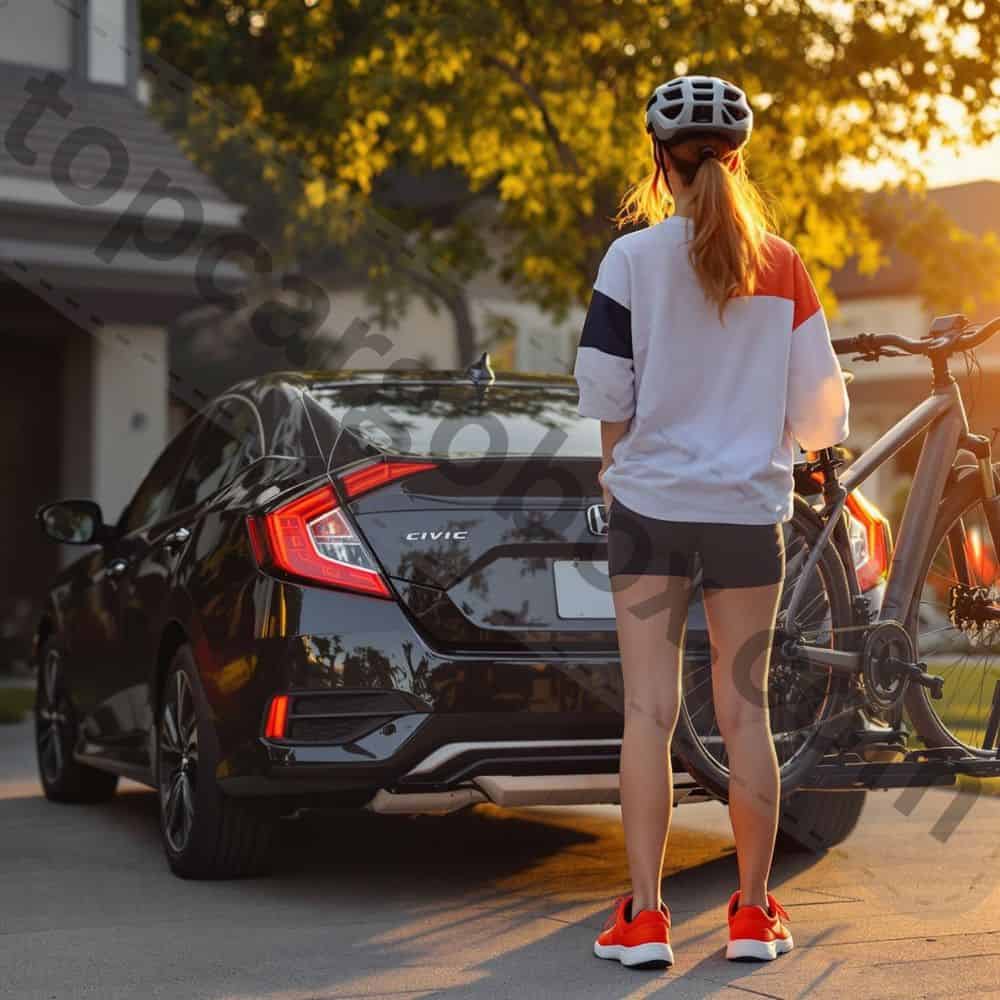
Where That Extra Cash Actually Goes
So what makes that price jump worth it? Think layers of “nope” for thieves: hardened steel arms that laugh at bolt cutters, internal locking bolts securing the rack to your hitch, and keys that can’t be jiggled open with a screwdriver. Brands like the Thule Apex XT 4-Bike or Swagman XC Cross-Country pack this peace-of-mind engineering into their mid-range models. Yeah, it stings paying more than your last phone bill—but how’d you feel seeing empty rack straps where your $2,000 trail slayer hung ten minutes ago? Exactly.
No Hitch? No Panic—Just Smarter Choices
Driving a hatchback or sedan without a receiver? I get it—hitches aren’t always doable. But listen: those ultra-cheap strap-on racks? Nice try, but they’re basically theft invitations. If you’re trunk-only, explore rugged options like Thule’s hitch-free carriers with locking frame claws plus your own burly chain. Or get creative with no-hitch workarounds that don’t sacrifice security. Compromising now could cost you thousands later—and that sucks big time. Not gonna lie, protecting bikes on smaller wheels takes extra hustle… but so does replacing them.
Key Features of High-Security Bike Racks
Feature Category | Key Specifications & Details |
|---|---|
Core Lock Type | Disc detainer or double-bitted cylinder locks (equivalent to Gold/Sold Secure rating or better). Unique key codes. |
Locking Arm Material | Hardened or boron steel construction (resists cutting, sawing). |
Integrated Locking | Secures bike frame directly to the rack AND secures the rack itself to the vehicle (hitch pin lock, frame hook locks). |
Hitch Security | Internal hitch lock mechanism (bolt through receiver & stinger), protected housing. Anti-rattle design essential. |
Trunk/Hatch Security | Locking metal frame hooks (not just straps). Rigid contact points. |
Roof Security | Locking fork mounts/wheel trays per bike + Locking crossbar feet to vehicle rails. |
E-Bike Specifics | High weight capacity (60+ lbs per bike). Reinforced locking arms & frame. E-bike frame compatibility. |
Build Quality | Robust welds, thick gauge steel tubing, quality materials resistant to corrosion. |
Anti-Rattle | Tapered hitches, internal locking bolts, advanced tightening systems to eliminate wobble (improves security & safety). |
Warranty & Support | Strong warranty (lifetime on frame/components common for premium brands), good customer service reputation. |
Wrapping Up: Ride Free, Ride Secure
Facing the Theft Reality Head-On
Let’s be straight: coming back to an empty rack feels like a punch in the gut—it sucks, plain and simple. There’s no invisible shield stopping thieves, but you can force them to pick easier targets. How? Grab a rack actually engineered for security (not just convenience), bolt it on tight following every step in the manual, and never get lazy with those locks—even for “just five minutes.” Do this religiously, and you’ve suddenly made stealing your ride a high-effort, high-risk chump move. Think about it: why would they bother with your fortress when the car three spots down has bikes dangling from flimsy straps? Don’t let paranoia steal your adventures before thieves even get a chance. That epic trail or coastal ride isn’t worth skipping because you’re worried—it’s worth protecting smartly.
Lock In the Habits, Then Just Ride
You’ve done the homework, invested in legit gear—now own that peace of mind. Double-check your setup before walking away, park in well-lit spots when grabbing lunch mid-trip, and always yank off quick-release seats or bags. Tiny habits, huge payoff. High-quality racks like the ones we’ve covered do the heavy lifting, but you hold the keys (literally!). Stick with it, and suddenly that nagging fear fades—you’re free to actually enjoy the drive to the trailhead, not white-knuckle the rearview mirror. Because here’s the truth: obsessing over theft steals the joy faster than any criminal. Get out there, trust your system, and shred that new route. How many more sunsets or downhill sprints could you miss playing it too safe? Exactly. Go get ‘em.
Our team is creating outdoor-gear relevant articles with passion. If our articles can help you to find the correct solutions for your questions, we will be happy about that. In the content creation process, we usually collect accurate and useful information online or offline to compile our content in an organized way. Consequently, we can guarantee that you can discover some expected answers to your questions. We appreciate your time on our site.

